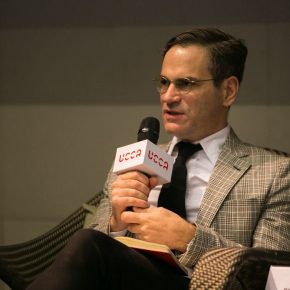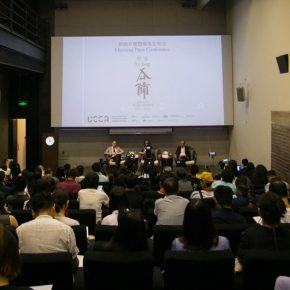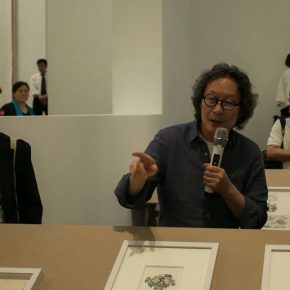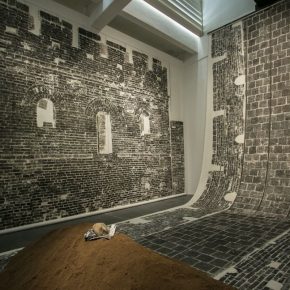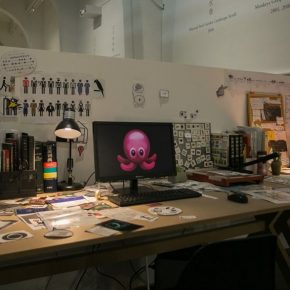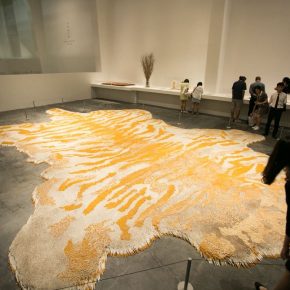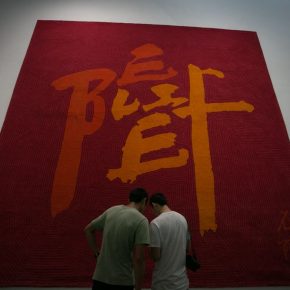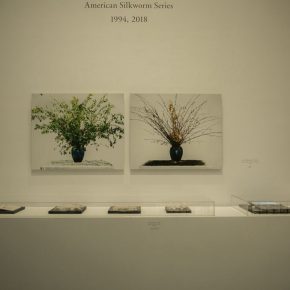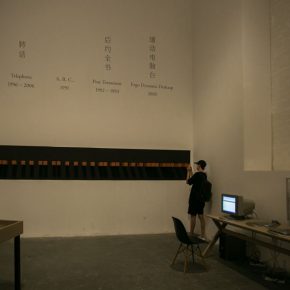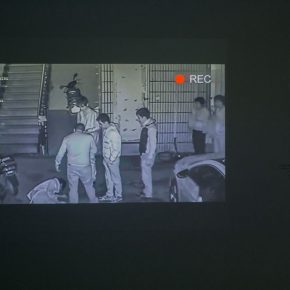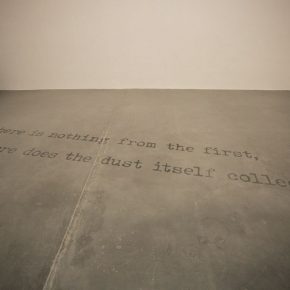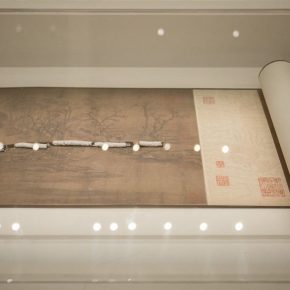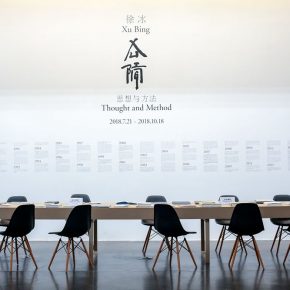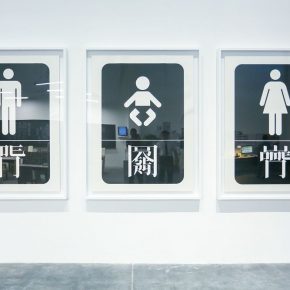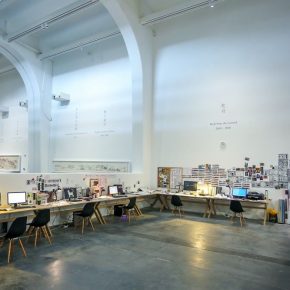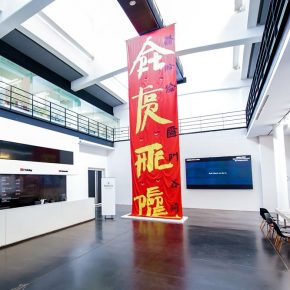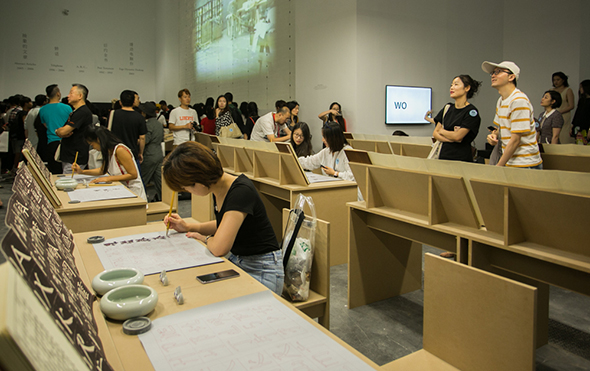
Recently, Xu Bing’s comprehensive institutional exhibition “Xu Bing: Thought and Method” was unveiled at the Ullens Center for Contemporary Art in Beijing. The exhibition brings together more than 60 works created during his forty years art career, which tries to explore Xu Bing’s thought and method through a comprehensive exploration and presentation. When looking back over his creations in the past forty years, Xu Bing expressed that this exhibition provided an opportunity for him to reflect on himself, “When these works are exhibited and reflected on, these works altogether like mirrors compose a three-dimensional form. Finally, I found that I was interested in this, I used to work in this way so that it turns out that I am just such a person.” The title of the exhibition "Thought and Method" is derived from the “retrospective presentation of Xu Bing on the basis of overall appearance, Xu Bing’s artistic method and his motivation to keep thinking is revealed through his works.” Therefore, this article is not going to sort out the interpretation of his works one by one in a long and tedious way, but to confront Xu Bing’s thought and method in creations along with the exhibition theme.
For the audience, observing Xu Bing’s work is not a particularly complicated matter. This artist, who has a reputation both at home and abroad, is not obsessed with the artistic language which might have profound complicated semantics. For him, the art with “both refined and popular taste” can satisfy him. Meanwhile, Xu Bing is recognized as an artist with an “extremely literati temperament”. His artistic creation process is more like a coherent research work. His logic is clear and his position is distinct. He is highly sensitive of his time. His creation is rigorous while his artistic expression is sharp. Generally, his works are composed of subtle cuts which reflect the historical process of Chinese contemporary art. From this perspective, he is not only an artist in the history of art, but also an artist of this great epoch.
Xu Bing graduated from the Printmaking Department of the Central Academy of Fine Arts, where prints have a profound influence on him, and even become the basis for intrinsic clues and artistic language of his subsequent creation. From the initial prints of the small works Shattered Jade, to the graduation work Series of Repetition, to the impressive Book from the Sky and the huge installation Ghosts Pounding the Wall before he visited the United States, all of which continue his experimental exploration of printmaking. In 1990, Xu Bing went to New York with the idea of “wanting to understand what contemporary art is” and had a ‘direct’ exchange with Western contemporary art. However, staying abroad made him clearly recognize the cultural genes that belong to him. “I later realized that the prints I studied at the Central Academy of Fine Arts, the traditional training skills and methods of creation, and the influences from outstanding works of Chinese art for thousands of years all contribute to my creation.” Since then, he keeps trying various art media such as conceptual art, installation, and performance and a series of contemporary artworks that have been created using mixed media. American Silkworm Series, Panda Zoo, Wild Zebra and other works, intertwined with Western art expressions and specific Chinese traditional elements, showing the complex relationship between Chinese and Western cultures, such as blending, colliding or repelling; A, B, C... and the Post-testment, the seemingly logical translation process between different languages as well as the illogically ridiculous and absurd results, showing the strange and isolated sense of the artist in the face of a new cultural context. The Square Word Calligraphy series further reconstructs English words in the form of Chinese calligraphy. This unfamiliar method also implies that when the artist first arrived in New York he had thought about the essence of language communication, but he also seems to achieve a reconciliation relationship between China and the West. The unconventional ideas and his unique artistic language made the art world of New York feel curious about this avant-garde artist from a conservative country. If Book from the Sky is a “totally Chinese work” completed under unconscious circumstances, then Xu Bing, who realizes the value of Chinese traditional culture, begins to really examine his cultural genes from this group of creations, and he becomes skillful in creations among fusions and transformations between China and the West.
“The artist is constantly constructing a circle that is closed by himself,” Xu Bing said. When examining the works created by Xu Bing in the past, it can be considered as an explanation for his later works. In the early prints Series of Repetition, you can see the methods of “plurality” in the later Book from the Ground and the film Dragonfly Eyes. Although their expressions and materials are quite different, in fact his early works contain interest and technique. Vice versa, the new work is an excavation and extension of something that is valuable in the past and that was not fully realized. It actually has a "cue" effect. Xu Bing said, “As long as you are sincere, no matter what form these works are, big or small, no matter how early or late, actually the final relationship between them is like constructing a closed system."
The connection, contrast and replay between a certain visual image in the history of art and the current reality is one of viewing experiences in art history. We are used to looking for a so-called model for a certain style. However, in Xu Bing’s view, the artist should use a completely new way of discourse to express what no one has said in the past. Because the past works of art are expressions of the artists of that era in the style of that era, it is not suitable for today's artists to express their own words. In order to be accurate, the artist has to create new artistic language and artistic style. "The art system itself and any expressions that the previous masters have provided for us cannot be used directly by me," Xu Bing said. The innovation he understands is that the artist uses new artistic expressions to present new ideas and new ways of thinking to the existing art and intellectual circles. This innovation promotes the progress of human civilization, or explores the relationship between people and this era, to touch the "most awful" part of this era. The search for new ways of speaking is actually about the form of new art language.
Therefore, Xu Bing has been looking for ways to work more closely with the epochal civilization. Around 2000, he aimed to present the broader and immediate current reality, and he sought and gained energy from the social scene with extraordinary sensitivity, such as Where Does the Dust Itself Collect when focusing on the “911” incident, using the contemporary Internet language and image texts to produce “Book from the Ground”, the rapid development of modern China and the powerful reality of urbanization development urged him to create the large-scale installation of Phoenixes, and the recent collection of public surveillance video clips into the film Dragonfly Eyes, etc.. “I always think that the tendency and style of art cannot be achieved by a plan. It is a fateful and destined thing. For example, someone asked me what I will do after Dragonfly Eyes? There is no way to answer this question because I have no plan. I can only say that if I still have energy, I am still someone who pays attention to a social destiny, or a person who is very concerned about the Chinese scene. If I have something new to say, then I will definitely find a new way to talk. There must be a reason to explore new works at this time,” Xu Bing said.
According to Philip Tinari and Feng Boyi, curators of this exhibition, Xu Bing adheres to the essence of simplicity and wisdom of eastern culture, and also faces the world in a broader sense. His works are forward-looking and vigilant; at the same time, his works under the guise of dislocation, multi-level social issues and cultural thinking sway and excite each other. Through the transformation of old artistic languages and the creation of new languages, the artist provides the audience with a variety of channels for entry and exploration. When talking about his own creations, Xu Bing has the following statement: “My creation is less and less like standard art, but I require my work to be creative, my idea is accurate, solid, and inspiring of human thoughts, plus another item: it does good to society”. There is no doubt that Xu Bing has practiced this belief, which made him a leader among contemporary artists of the same epoch.
Text by Lin Jiabin, translated and edited by Sue/CAFA ART INFO
Photo by Hu Sichen & Ullens Center for Contemporary Art



